|
Boston Ivy
|
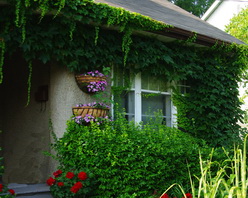
What Does It Look Like? Boston Ivy has fairly large, three lobed, dark green, leaves that are about 15 cm across. They are borne away from the wall by large heavy petioles of a quite light yellow green colour. These petioles often stay on the vine for some time after the leaves have dropped in the fall; giving a rather unusual look to the covered wall for a week or so. Each year’s new growth will be much smaller leaves that rapidly advance across any surface that they find. The plant develops a large woody stem as it matures and this has some winter appeal as well.
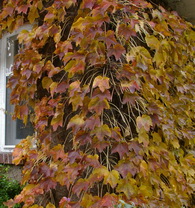 Maintenance? Yes, there is some. Once established, Boston Ivy can easily grow up to a couple of metres during its summer growth period. If your walls are already covered to a satisfactory degree, then you will quickly find your windows, soffits and gutters being covered with the small leaved new growth. This requires a severe annual pruning that usually involves climbing a ladder to reach all of the excess new growth. Once a year will usually be sufficient to curtail Boston Ivy’s aggressive tendencies if you are sufficiently ruthless in your pruning technique.
Maintenance? Yes, there is some. Once established, Boston Ivy can easily grow up to a couple of metres during its summer growth period. If your walls are already covered to a satisfactory degree, then you will quickly find your windows, soffits and gutters being covered with the small leaved new growth. This requires a severe annual pruning that usually involves climbing a ladder to reach all of the excess new growth. Once a year will usually be sufficient to curtail Boston Ivy’s aggressive tendencies if you are sufficiently ruthless in your pruning technique.
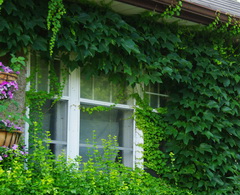
Growing Conditions? Boston Ivy is very tolerant of a variety of conditions. Mine has happily spent winters as cold as -30C and summers in excess of + 30C. It’s soil is a hard packed clay that has had minimal amendments or fertilizer over the 20+ years that it has been growing. There have been very wet years and years of great drought and it continues to reach out to cover the windows by mid summer.
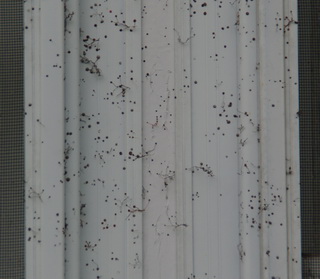 Does It Hurt The Wall? This is the most commonly asked question about any climbing vine. This climber does not grow into fissures on the wall but rather produces little adhesive pads that adhere to almost any surface, from stucco to glass. When it is ripped away from most surfaces it does tend to leave those little pads behind. They can be unsightly on a smooth surface but they eventually dry up and fall off. They do little or no actual harm to the surface of their host wall.
Does It Hurt The Wall? This is the most commonly asked question about any climbing vine. This climber does not grow into fissures on the wall but rather produces little adhesive pads that adhere to almost any surface, from stucco to glass. When it is ripped away from most surfaces it does tend to leave those little pads behind. They can be unsightly on a smooth surface but they eventually dry up and fall off. They do little or no actual harm to the surface of their host wall.
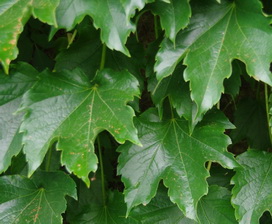
Rich green foliage that adds age and character to a building along with some fall colour and cooling shade in the heat of summer all add up to the charm of this plant that make me tolerate the one day a year when I must scramble up a ladder to remove its healthy but aggressive growth from unwanted areas of the house.
